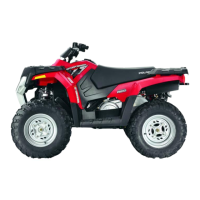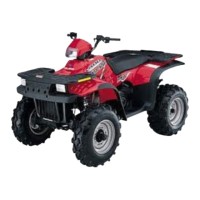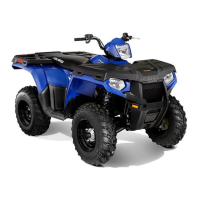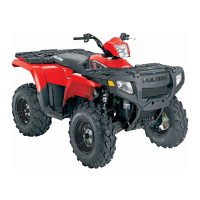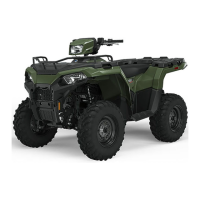ENGINE
3.34
VALVE SEAT RECONDITIONING, CONT.
7. Remove valve and check where the Prussian Blue™
indicates seat contact on the valve face. The valve
seat should contact the middle of the valve face or
slightly above, and must be the proper width.
S If the indicated seat contact is at the top edge of
the valve face and contacts the margin area(B) it
istoohighonthevalveface. Usethe30° cutter
to lower the valve seat.
S If too low use the 60° or 75° cutter to raise the
seat. When contact areais centeredon thevalve
face, measure seat width.
S If the seat is toowide or uneven, useboth topand
bottom cutters to narrow the seat.
S Iftheseatistoonarrow ,widenusingthe45° cutter
and re-check contact point on the valve face and
seat width after each cut.
NOTE:When using an interference angle, the
seatcontactpointonthevalvewillbeverynarrow,
and is a normal condition. Look for an even and
continuous contact point on the black marker, all
the way around the valve face.
8. Clean all filings from the area with hot soapy water ,
rinse, and dry with compressed air .
9. Lubricate the valve guides with clean engine oil, and
applyoil orwater basedlapping compoundto the face
of the valve. Lapping is not required with an
interference angle.
(A)
(B)
Proper Seat Contact On Valve Face
Bottom - 60° or 75°
Seat - 45° or 46°
Top - 30°
Seat
Width
Valve Seat Width:
Intake Std: .028I (.7 mm)
Limit: .055I (1.4 mm)
Exhaust Std: .039I (1.0 mm)
Limit: .071I (1.8 mm)
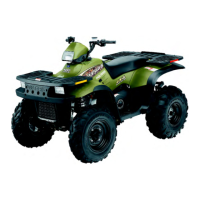
